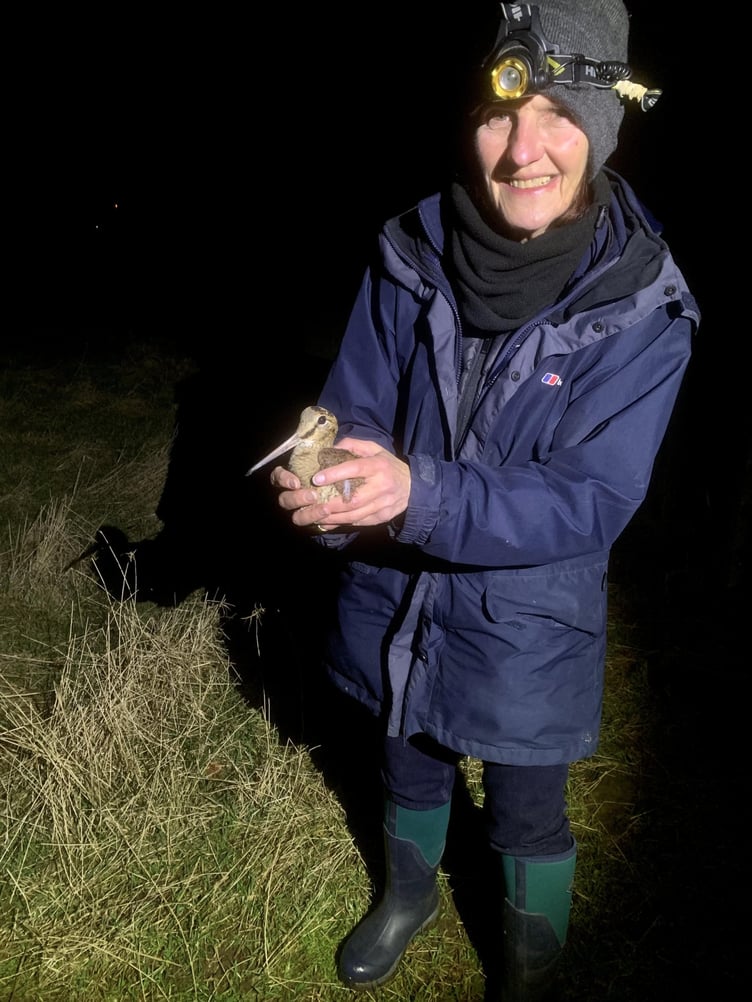A partnership between farmers and conservationists is increasing our understanding of our little-known woodcock population.
The Manx Ringing Group and Manx Wildlife Trust (MWT) have teamed up with local farmers to study an elusive farmland bird using new thermal imaging equipment funded by the Wildlife Park Conservation Fund.
The woodcock is a red-listed bird of conservation concern; however, little is known about them owing to their shy behaviour and nocturnal habits. As their name suggests, they spend daylight hours in woodland, safely hidden below an understory of brambles and ferns, only emerging into the farmed countryside under cover of darkness.
David Bellamy, agri-environment officer at MWT, explained: ‘The island is home to two different woodcock populations.
‘In winter we enjoy an influx of birds from Scandinavia and even Russia, escaping a winter that is altogether far worse than ours.
‘Of greatest conservation significance is our Manx breeding population which is critically endangered. A review of all data from 1977-2021 by our conservation colleagues at Manx BirdLife confirmed that our year-round resident population is on the verge of extinction, with their breeding range decreasing by 93.3% during this time. A dearth of more recent breeding records suggests that we may have already lost our local population. The reasons for this are not fully understood, but likely include the impact of non-native mammals such as feral cats and ferrets (“polecats”).’
David continued: ‘Thankfully the migrant population is faring far better, and this new research has found that the existing winter estimate of 100 birds on island is very much an underestimate, with 38 woodcock being found in one night on a single farm, and 60 recorded over four farms visited in just a week. This is very welcome news.’
Robert Fisher of the Manx Ringing Group said: ‘I’ve been stunned by just how many Woodcock we have found using the thermal imager. We had expected to find some on wet pastures, but we have been taken aback to find them across such a variety of farmland habitats supported under the DEFA Agri-Environment Scheme. Areas of winter barley stubble where no pesticides have been used have been found to have a greater volume and variety of nocturnal wildlife than we anticipated, including woodcock, skylark, meadow pipit, song thrush and fieldfare. In fact, the 38 woodcock found on a single night is probably more than I’ve seen during the rest of my life!’
Also of particular note, 12 snipe and four jack snipe were recorded on a single wet field on a northern farm. Jack snipe are perhaps the most secretive of all Manx birds, being very infrequently reported with just a handful of records each year. Three of these birds were fitted with uniquely numbered, lightweight metal rings. A check of modern ringing records suggests that these are the first-ever jack snipe to be ringed on the Isle of Man.
David said: ‘The more we know about our wild species, the easier it becomes to conserve them. The Agri-Environment Scheme rewards farmers for their vital role in conservation, so this new understanding will help ensure that the right initiatives are being delivered in the right place for our most threatened wildlife. This project confirms that healthy soils support amazing wildlife while also providing the best return for our farmers.’
Robert added: ‘Aside from birds, we have also gained a greater appreciation of farmland mammals. On most February nights we have recorded woodmice, rabbits, hares and even (given the mild temperatures) foraging hedgehogs and bats. The number of small mammals seen explains why we have also been fortunate enough to record barn owl and long-eared owl. As is now expected, wallabies were easily spotted in the north, but we were surprised by the number of feral cats found at each farm, which will undoubtedly pose an additional threat for our ground-nesting birds.’
Robert concluded, ‘This new device will revolutionise our understanding of Manx farmland wildlife. It’s been so rewarding to show farmers a woodcock up close, especially those who didn’t even realise they had them. In just a week we have fitted 12 woodcock, 10 skylark, three jack snipe, two fieldfare, two song thrush and a meadow pipit with leg rings, which I hope will shed some new light on their migration, life cycle and longevity. A year from now, perhaps we might confirm that the woodcock that will shortly be departing for Russia may well return to the exact same field where we found them this year.’
Readers are reminded that all wild birds have legal protection under the Wildlife Act 1990 and that only suitably qualified, experienced and DEFA-licensed individuals can undertake the above-mentioned activities.



-(1).jpeg?width=209&height=140&crop=209:145,smart&quality=75)
.jpg?width=209&height=140&crop=209:145,smart&quality=75)
Comments
This article has no comments yet. Be the first to leave a comment.